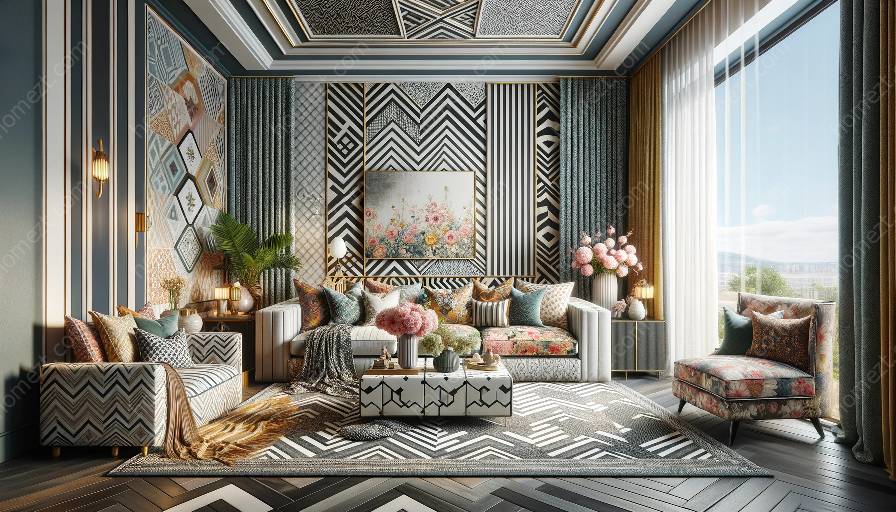Pattern mixing in decorating is a fascinating aspect of interior design that involves combining different patterns, textures, and colors to create a visually appealing and harmonious space. It is an art form that has been influenced by various cultural traditions and styles, each contributing its unique aesthetic and sensibility to the practice of pattern mixing.
Cultural Diversity and Pattern Mixing
Cultural diversity plays a significant role in shaping the way people approach pattern mixing in decorating. Different cultures have their own rich traditions of using patterns in textiles, ceramics, and other decorative arts, and these traditions often find expression in the way people decorate their homes.
Asian Influence
Asian cultures, such as those of China, Japan, and India, have a long history of intricate and elaborate patterns in their art and design. These patterns often feature motifs inspired by nature, such as flowers, birds, and animals, and are characterized by a sense of harmony and balance. When incorporating Asian influences into pattern mixing, one might combine delicate floral prints with geometric designs or mix bold colors with subtle textures to create a unique and vibrant aesthetic.
African and Middle Eastern Influences
African and Middle Eastern cultures are known for their bold and vibrant patterns, often inspired by tribal art, geometric shapes, and intricate textile designs. These influences can be seen in the use of bright and contrasting colors, as well as the incorporation of traditional handwoven textiles and intricate embroidery. When embracing these cultural influences, one might combine bold, graphic patterns with earthy textures and natural materials to create a warm and eclectic atmosphere.
European Influence
European cultures have also made significant contributions to pattern mixing in decorating. From the classic elegance of French toile de Jouy to the timeless appeal of English chintz, European patterns often exude a sense of refinement and sophistication. When incorporating European influences, one might juxtapose traditional floral prints with ornate damasks or mix vintage-inspired patterns with modern, minimalist elements for an eclectic and personalized interior.
Understanding Cultural Symbolism
In addition to aesthetic considerations, cultural symbolism also plays a crucial role in pattern mixing. Many patterns carry specific meanings and symbolism that reflect the values and beliefs of a particular culture. By understanding the cultural significance of different patterns, decorators can create spaces that resonate with deeper cultural meaning and significance.
Symbolism Through Patterns
For instance, in many Asian cultures, the lotus flower is a symbol of purity, beauty, and enlightenment, while in African cultures, the use of bold geometric patterns often carries spiritual and cultural significance. By incorporating these symbolic patterns into decor, one can infuse the space with a deeper sense of cultural meaning and heritage.
Embracing Cultural Fusion
In today's globalized world, pattern mixing in decorating has evolved to embrace cultural fusion, where different traditions and styles are combined to create a rich tapestry of visual diversity. This approach allows decorators to draw inspiration from a wide range of cultural sources and create eclectic, multicultural spaces that celebrate the beauty of diversity.
Multicultural Pattern Mixing
By embracing multicultural pattern mixing, decorators can experiment with blending patterns from various cultural traditions, creating a visually dynamic and richly layered decor. Whether it's combining African textiles with Asian ceramics or mixing European tapestries with Middle Eastern rugs, the possibilities for cultural fusion in pattern mixing are endless, providing decorators with a wealth of creative opportunities.
Conclusion
Exploring the cultural influences on pattern mixing in decorating offers a deeper understanding of how different cultural traditions and styles have shaped the art of combining patterns in home decor. By drawing inspiration from diverse cultural sources, decorators can create unique, harmonious, and culturally rich spaces that reflect the beauty and complexity of our interconnected world.






































